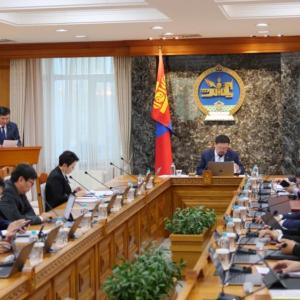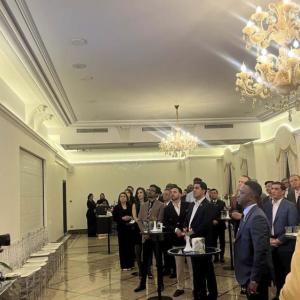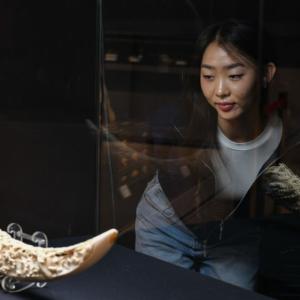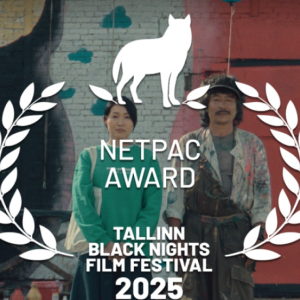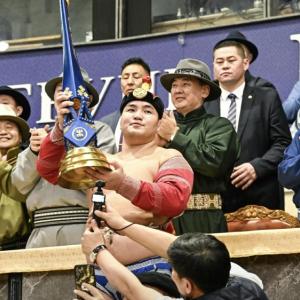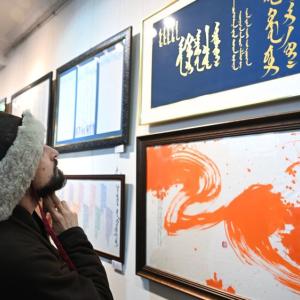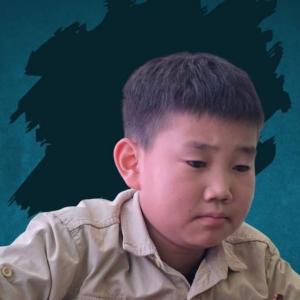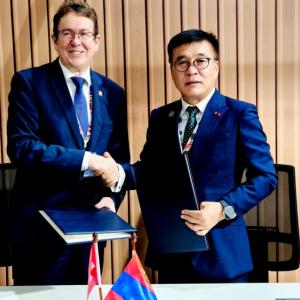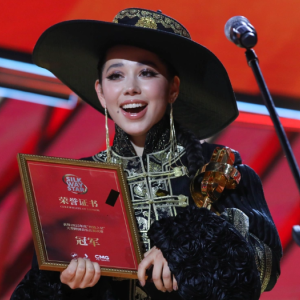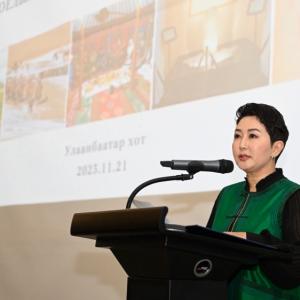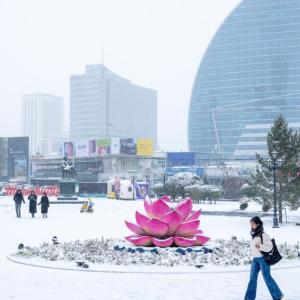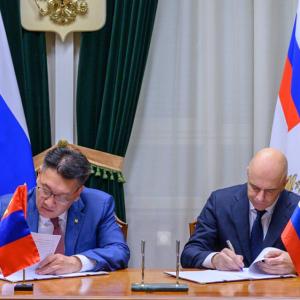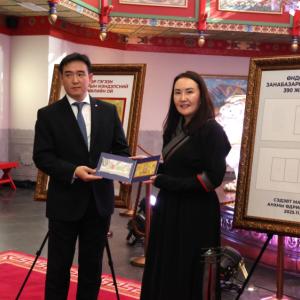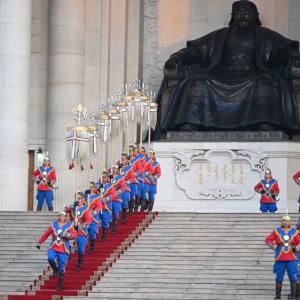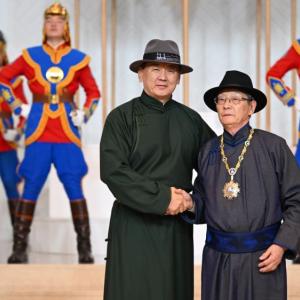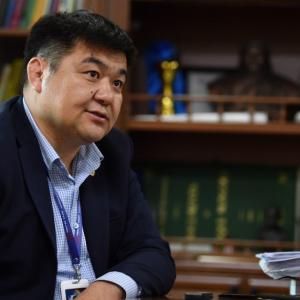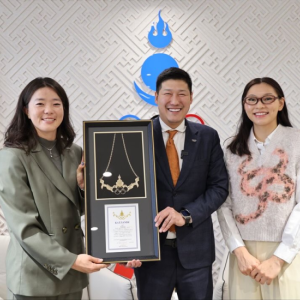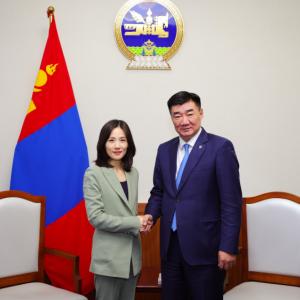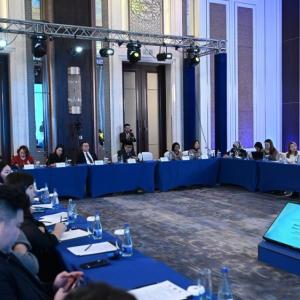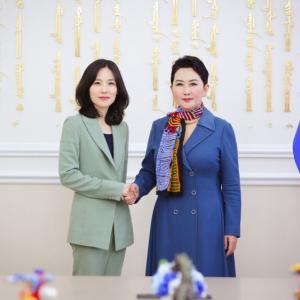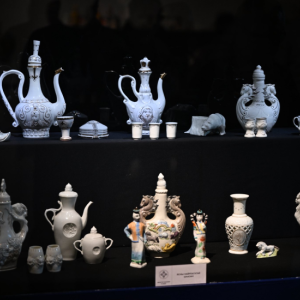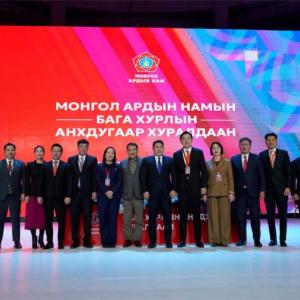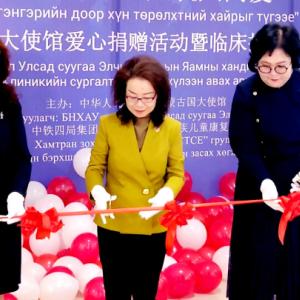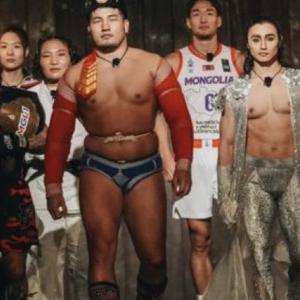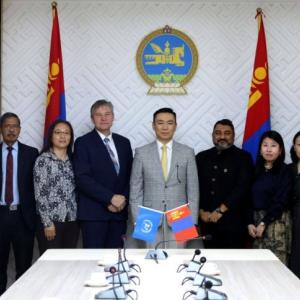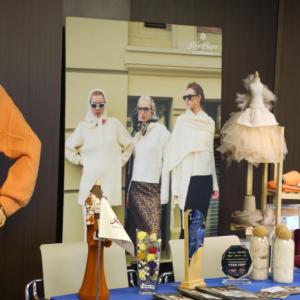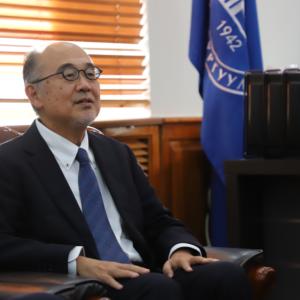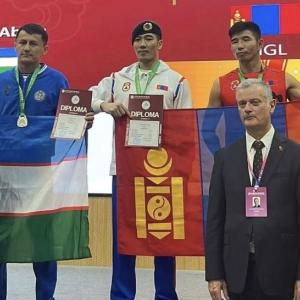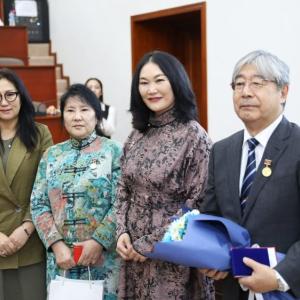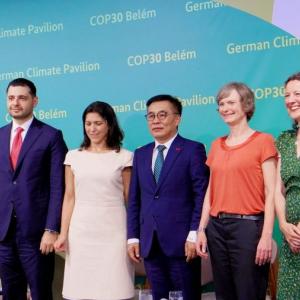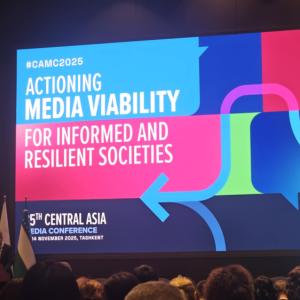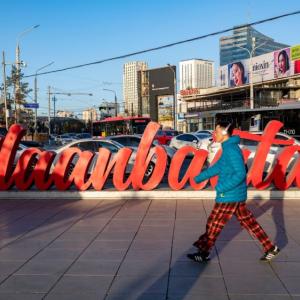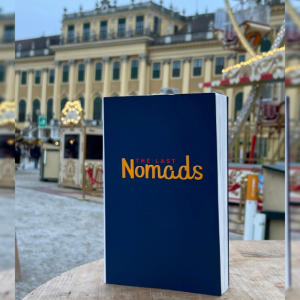A Day in the Life of a Camel Herder in the Snowstorm
The Mongol Messenger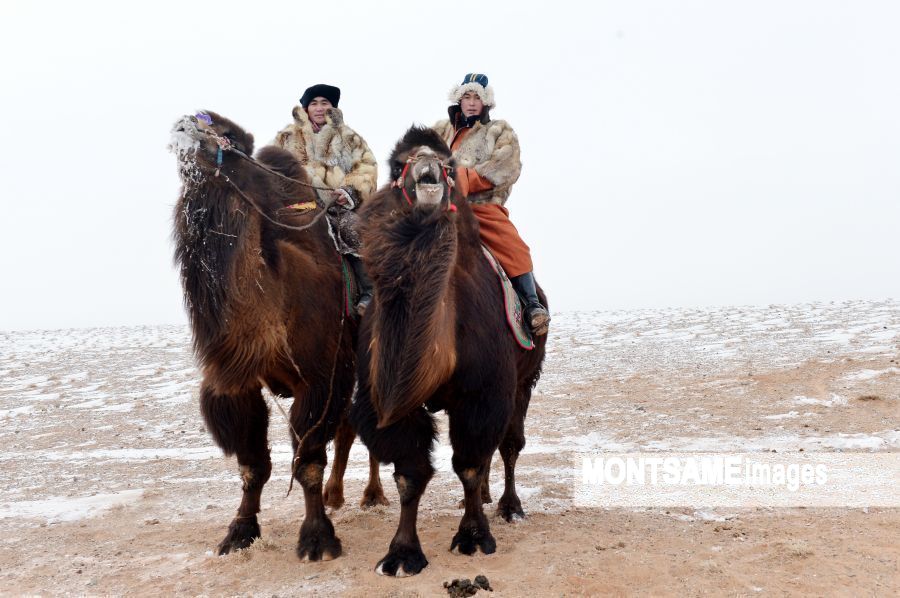
Ulaanbaatar /MONTSAME/.
I.
Mongolia is the only country in the world that has preserved its nomadic lifestyle. There are many in the country who have been upholding their age-old livestock farming traditions in the harsh conditions of the countryside. The five primary species of livestock build up strength throughout all four seasons, but this highly depends on pasture productivity, thus making it necessary for herders to practice transhumance. One of the five primary species of livestock—the two-humped camel greatly adapted to the Gobi region of Mongolia. It is for that reason the reporting team of MONTSAME National News Agency chose to spend a day at the home of Herder of Thousand Head of Livestock, foremost camel herder of Dundgobi aimag from the aimag’s Ulziit soum Jargalsaikhan Otgon.
The journey to the Gobi was long and arduous, and the head of the host household, was someone we had never met before despite feeling somewhat familiar. While traveling across the vast desolate parts of the Gobi, we saw the warm days that only come with February in the peaceful life and flora of the region. And on that evening, we arrived at the doorstep of O.Jargalsaikhan, whom we had never seen before but were bound to cross paths with.
The next morning, the Gobi that was tranquil with a sky full of stars just the night before, faced a snowstorm. Jargalsaikhan’s cousin T.Saikhantsetseg, who was temporarily staying with him, lit a fire in the stove early in the morning, making tea from camel milk in a large pot to serve it to the homeowner and guests. Amid the snowstorm, the family’s livestock is seen chewing fodder in their warm pens in no mood to graze. “It started storming from dawn. There has been almost no snow this winter. Thankfully, it looks like our livestock will be able to get hydrated from the snow until after the Lunar New Year. We will observe the mood changes in the sky before pasturing today due to the snowstorm,” Jargalsaikhan said.
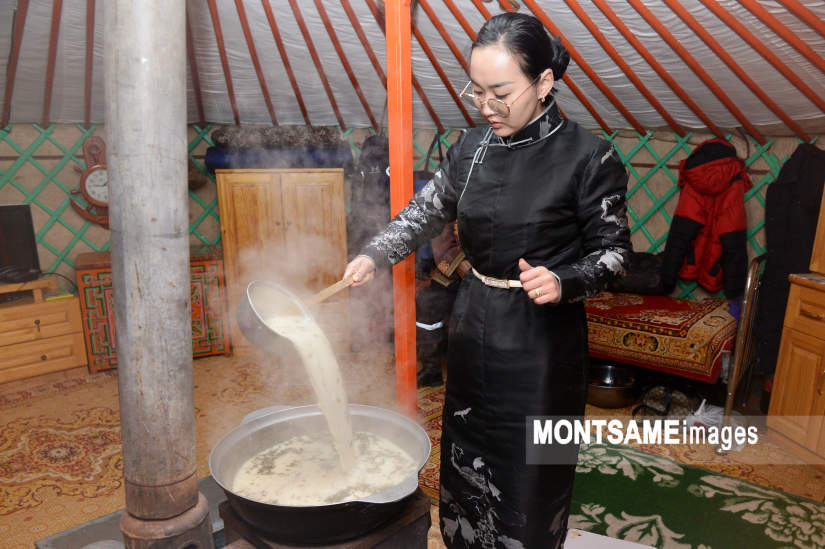
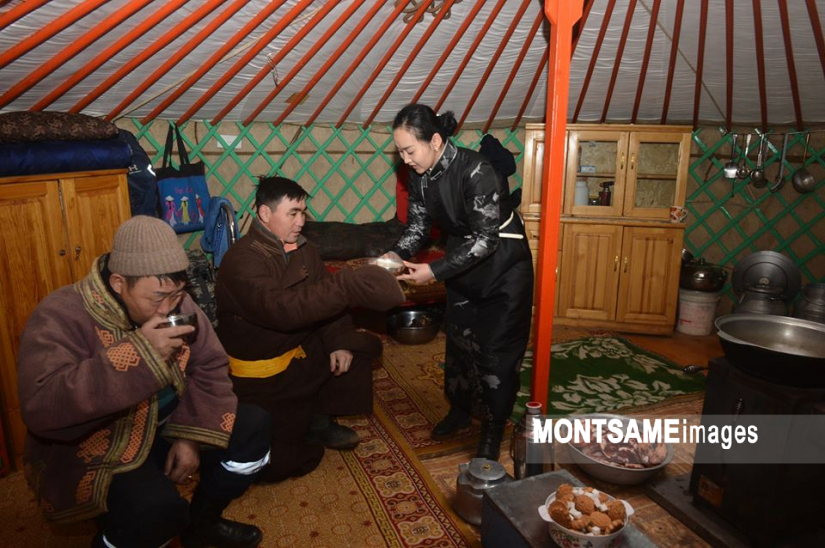
The herder family has all five primary species of livestock that Mongolians have domesticated long ago and been benefiting from. They have over 1,000 head of small cattle (sheep and goats), around 40 head of cattle, more than 100 horses, and over 500 camels. The household welcomed about 100 baby camels last year. The ones lying outside the ger were all female camels and two-year-old baby camels as the rest were grazing in the snowstorm, which made it hard to find them. The homeowner said, “Camels are very smart creatures. They do not breed when kept in a small group. Instead, their population grows only in a large herd of camels. Even now, I believe they must be resting on one of the hillsides around their pastureland all grouped up together.”
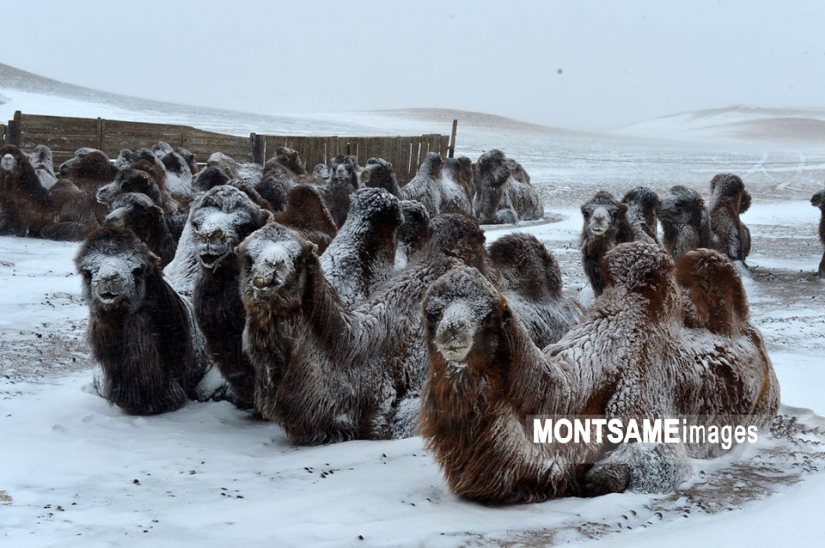
Jargalsaikhan’s eldest brother O.Tegshbayar, who guided us to his brother’s home from Mandalgobi soum of Dundgobi aimag, proudly told us that their father, State Honored Herder, three-time foremost herder of Dundgobi aimag Kh.Otgon was awarded Herder of Thousand Head of Livestock in 1990, and State Honored Herder in 2002, and that he is currently receiving medical care in Ulaanbaatar. The two have eight other siblings. Three of the younger siblings of Tegshbayar, O.Jargalsaikhan, O.Batchuluun, and O.Enkhjargal followed in their father’s footsteps, becoming herders. Welcoming us into his home with a broad smile on his face, Jargalsaikhan is the youngest of them.
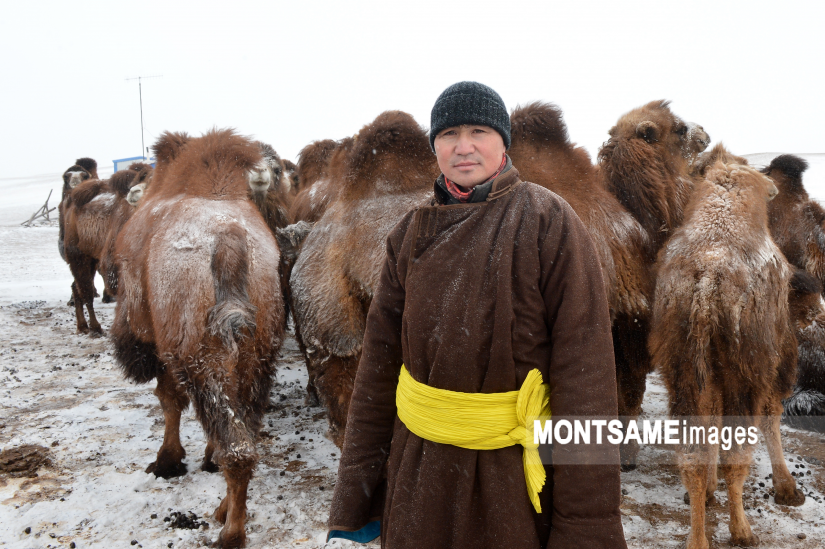
II.
Even after breakfast, the camels had no sign of getting up. When the storm calms down and the sky is clear, it is said that they shake off the snow themselves. The Gobi people are able to know how the weather will be from being well aware of the behavior of the camels. After drinking some tea, Jargalsaikhan steps outside. A few bundles of hay are tossed from the barn. Then he feeds the goats and sheep that stayed back instead of grazing. His youngest son J.Erkhbayar follows him as he walked back and forth through the sheep with the hay. It is adorable to see him stand next to a goat holding some grass in his little hand, cheerfully saying ,"Dad, hold a goat for me."
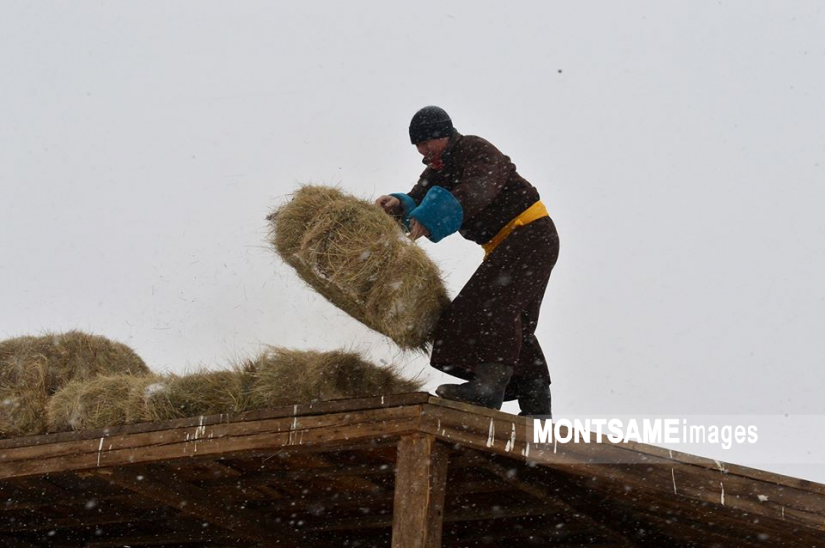
The television is seen to be turned on as Jargalsaikhan gets back into his ger after feeding the sheep. Although herders are able to watch not only Mongolian but also foreign channels with the help of TV antenna, they do not often have a chance to watch it because of their busy daily life. As we got inside the ger, his eldest daughter J.Enkhjin, who is in 3rd grade this year is seen studying. As part of the measures being taken on prevention of the coronavirus, the Government of Mongolia has extended the students’ winter break, with certain classes being taught online and on television. Having noted down the schedule, she said that she never forgets all the timetable for the TV classes she memorized. Therefore, she carefully writes down and memorizes the lessons being aired, and even does more homework than she needs to do. His 5-year-old younger brother J.Erkhbayar will start school next year.
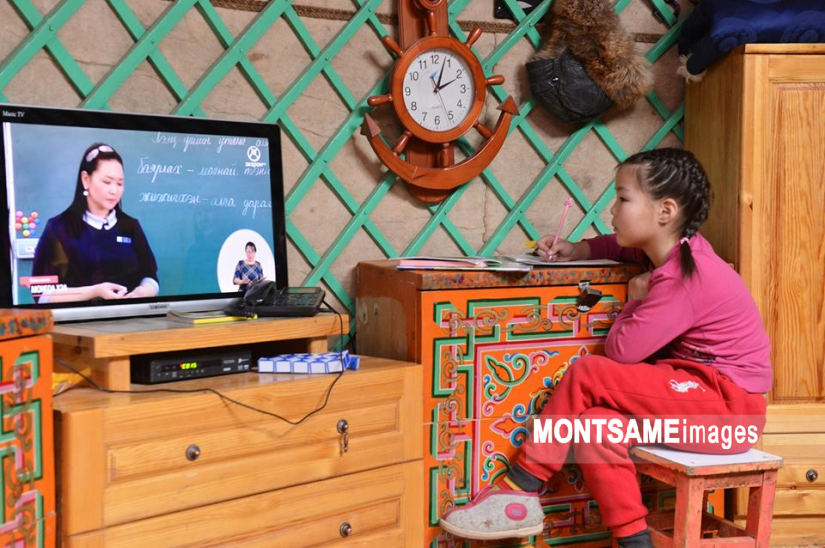
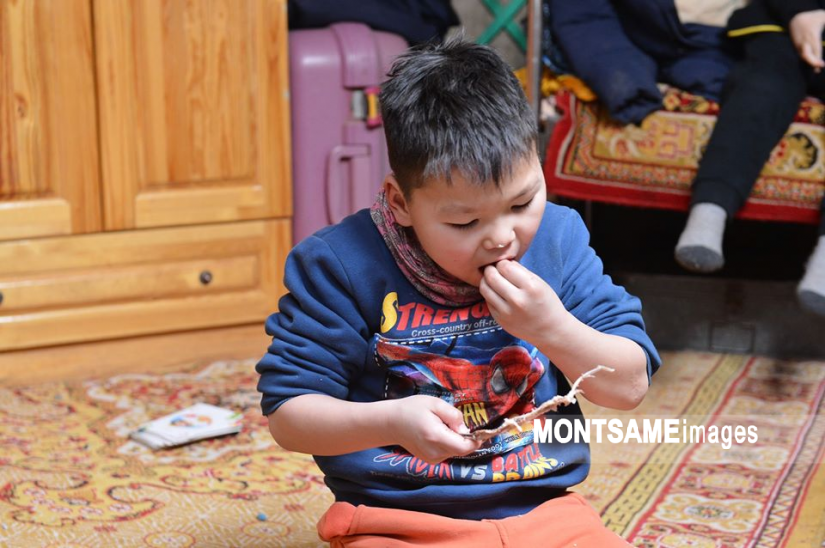
While the girl was writing down her notes from the TV class, a guest came inside. Our new acquaintance, who came all the way against the frosts and blizzard on his camel, is called E.Erdenebayar, a cousin of Jargalsaikhan. When the cup of tea was about to be given to him, he pulled out his silver bowl from inside of a yellow silk bag.
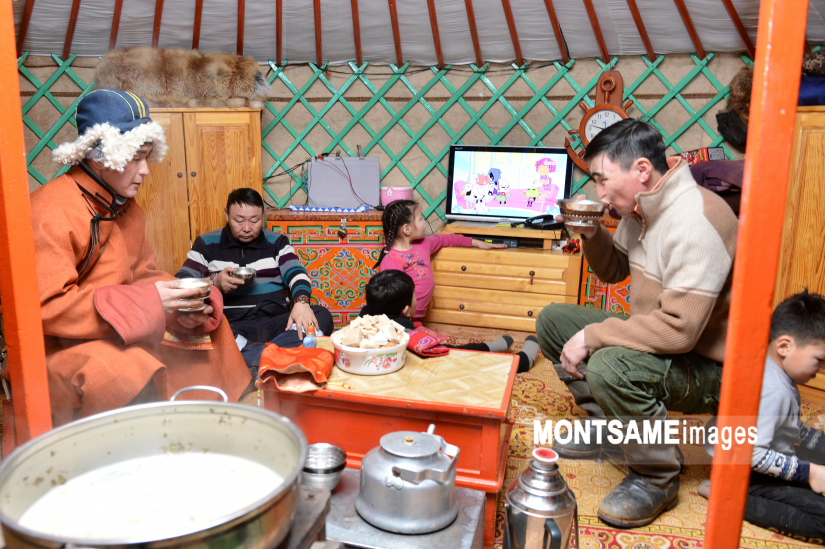
Throughout history, a cup has not just been a container for food and drink for Mongolians. From various folk proverbs such as, “If you are alive, you will drink water from a golden cup,” and “A cup returns in a day, a horse returns in year,” it is evident that cups have been considered a symbol of good omen to the point of directly connecting one’s life with the item. When we asked Erdenebayar about his bowl, he said, "From early in history, us Mongolians have considered our own cups as a highly valuable item, putting it in a separate bag and not passing them to others, using it only for eating and drinking their own food. I heard that Russians used to put a silver coin at the bottom of their cups when they drank something. And in our case, we use silver bowls. Nowadays, various diseases /referring to the coronavirus/ are widespread in many foreign countries. During this time, it feels right for everyone to have their own separate cups when eating and drinking.” At the same time, O.Tegshbayar, the eldest son of State Honored Herder Kh.Otgon said, “When he was young, my father also always used to put his own bowl in a fancy bag with intricate traditional patterns, and had it with him at all times.”
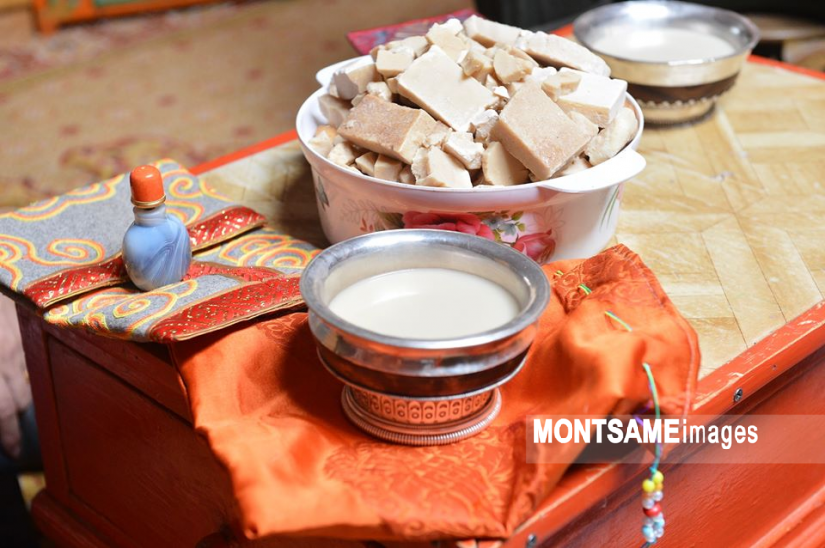
This unique culture from the old times is reviving today as the people have begun to give silver bowls to each other, considering it as the most respectful gift. Seeing a young man carrying his own bowl inside a special bag in the middle of the Gobi Desert suddenly gave us the feeling as if we were meeting with an old friend. Just like how nomadic life continues to exist in the wide-open land of Mongolia, some traditions and culture that have been forgotten are reviving.
III.
Due to the blizzard, Jargalsaikhan makes a phone call to his brother’s home to ask for help with milking the camels. The ‘G-mobile’ cell phone network can be seen playing a significant role in the life of herders, who live in the secluded Gobi region. Soon, his sister-in law arrives to milk the camels together with her daughter. Neglecting the blizzard, they all prepare to milk the camels, and head out as they discuss who should use the wooden bucket with twine string made of wool, and the iron bucket.
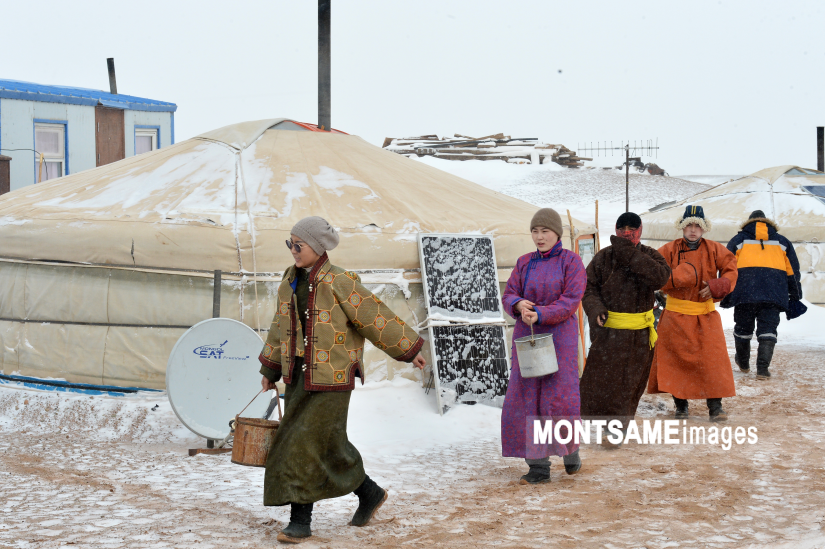
After bringing out the young camels from the separate fence, the milkmaids get into their jobs after letting them suck a bit first one by one. Rich in proteins and good fats, camel milk is effective in curing various illnesses. For instance, it has already proven that camel milk has many benefits such as decreasing the number of cancer cells, reducing the risk of getting sick as well as treating diabetes. Although the amount of sugar contained in camel milk is relatively high compared with other animals, it is 2.3 percent lower compared to breast milk. Milk sugar creates an acidic environment in the stomach by entering into the stomach together with ferments and vitamins, transforming into lactic acid. By doing so, it kills bacteria that creates disease and disintegration, and supports the normal activity of heart, liver and kidney.
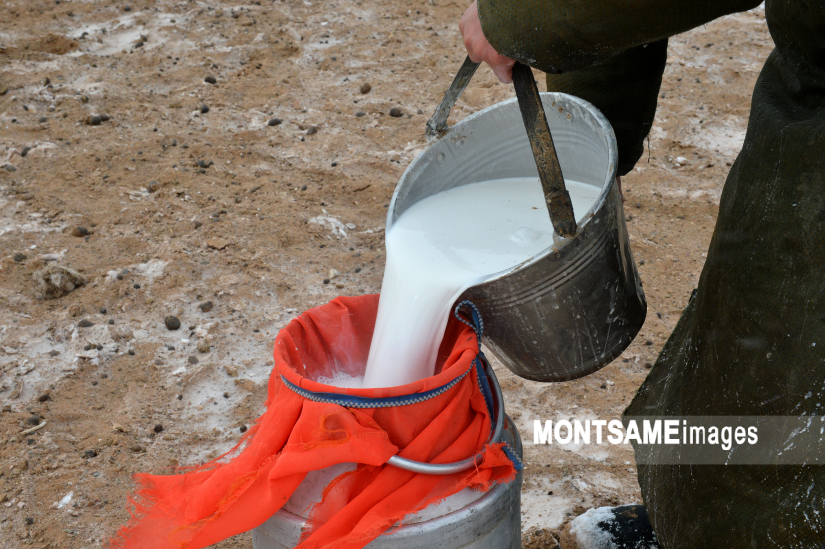
Within an hour, the three milkmaids completed milking over 40 camels outside the ger, which shows that Gobi women do not find difficulty in their daily works. In winter, Jargalsaikhan’s family gets over 20 liters of milk per day from female camels, and sells fermented camel’s milk using the remaining milk after their consumption. In the three months of winter alone, they sell an average of around 2 tons of fermented camel’s milk on the market, making up a certain amount of their income. Moreover, the family makes dairy products such as dried curd with camel milk, which is valued the highest out of various dried curds in Mongolia with one kilogram being sold at approximately MNT 40 thousand.
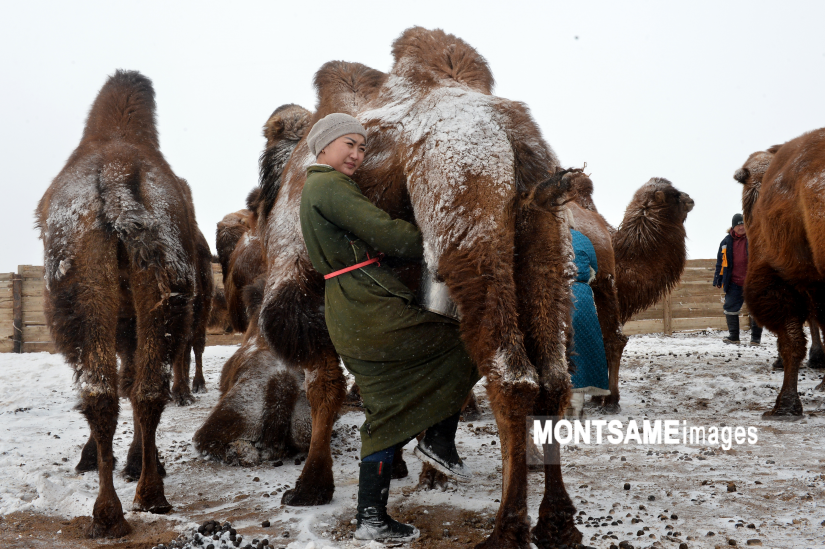
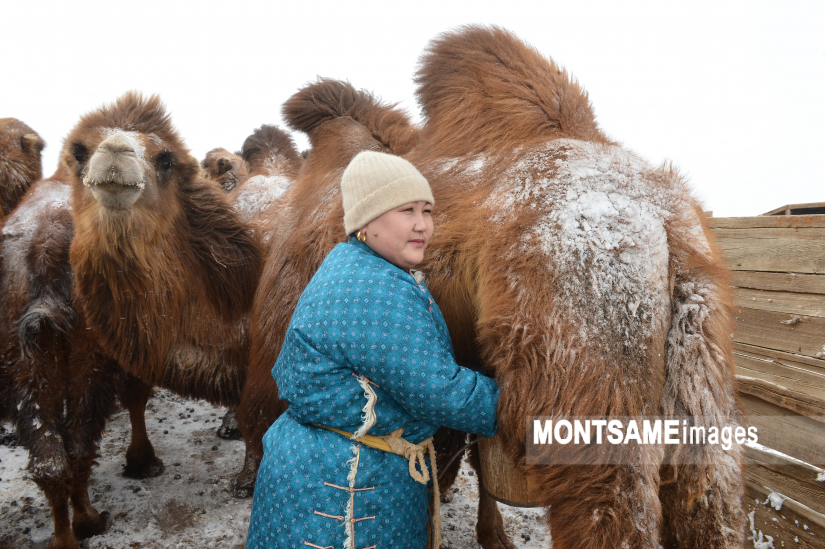
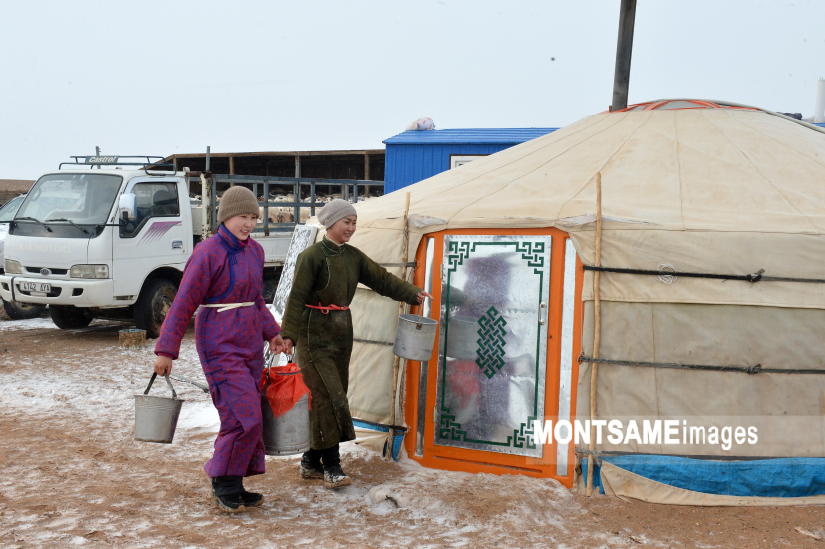
Having finished milking, milkmaids walk back to the ger as they hold their buckets full of milk. During this, Jargalsaikhan put the camels to the pasture. Camels that moved off from their dwelling directly go along the direction of the blizzard. As we were thinking that it is the way camels are, the camel herder turned them around to the south west with the help of his voice for herding camels. “Once you lead them in the right direction, they know where to go to graze during the blizzard,” he said.
I asked him, “Are camels an intuitive animal?’’ To this, Jargalsaikhan thought for a moment as he listened to the sound of snow under his boots and said, “Everyone knows that the Gobi is a region with strong winds and storms. Nevertheless, we have already become accustomed to our Gobi. It would not be a surprise to see a snow storm despite having warm weather during the last month of winter. There are occasions in which we herders, who lived in the Gobi herding camels for many years, become lost in the massive dust storms and blizzards. When I do not know which direction my home is, I release the halter from the camel I was riding, letting it roam free. As it leisurely walks without losing its direction in any blizzard, I am brought home before I even realize it. Many cases like it happened not only to me but also to other local people. Therefore without a doubt, camels are very smart and intuitive animals indeed.”
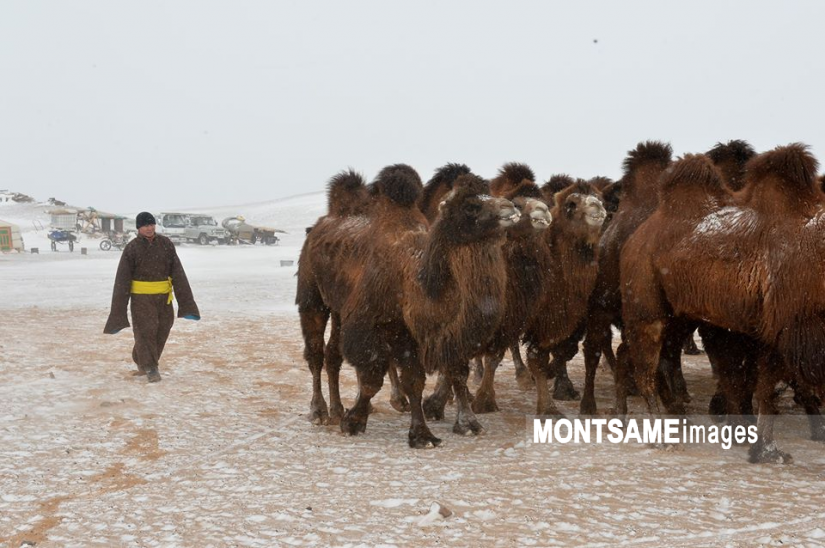
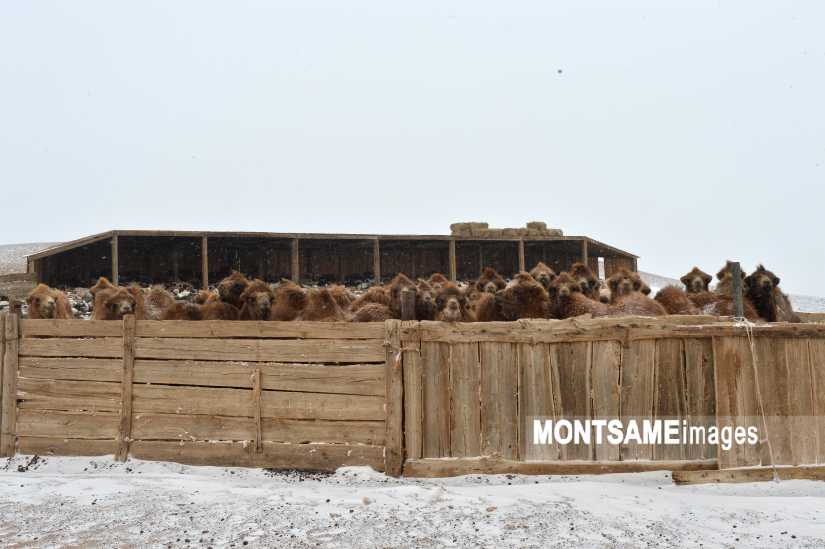
Afterwards, he put the sheep and goats to the pasture. If there was no blizzard, Jargalsaikhan would have had another task to do, which was to water the livestock.
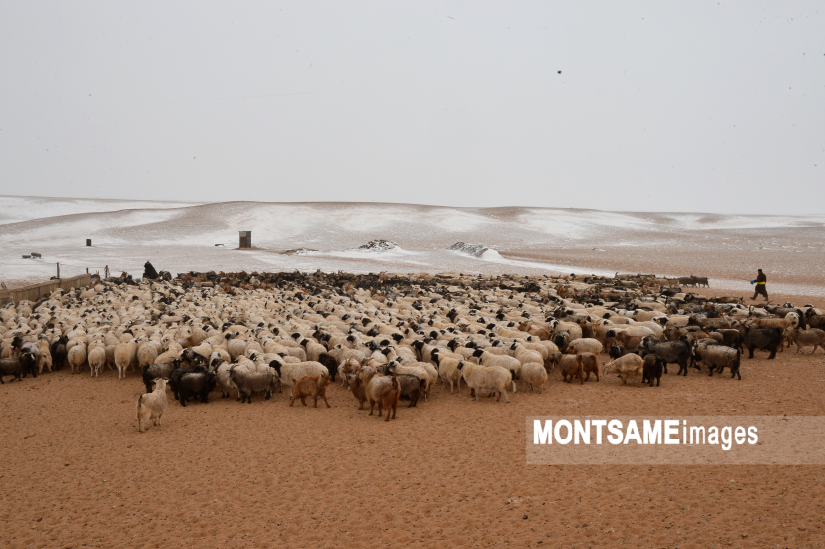
While waiting for the meal to be ready, the herders who finished their milking talks about all sorts of topics. Mostly they talk about the flock of camels, cattle-breeding, and the weather, and it is rare to touch upon their pressing issues and troubles. Just like how it is said that there are no tears for desperation, I thought that only such calm and patient people can become accustomed to the great Gobi in spite of facing the difficult sides of nature many times. It was right during this time that the ger was filled with the laughter of herders and warm talks after finishing an enormous amount of work. And you would not ever guess how pleasant that moment is.
IV.
When the snowstorm subsided in the afternoon, making it easy to see in the long distance, Jargalsaikhan headed to check a group of grazing herd of camels. As he owns 500 camels in total, the camels are not grazed at once--but in groups. Thus, we also decided to follow him to the pasture. Along the way, the main food of the camels such as shrubs and bushes appear in the snow. Without a doubt, this is the land of camels after all...
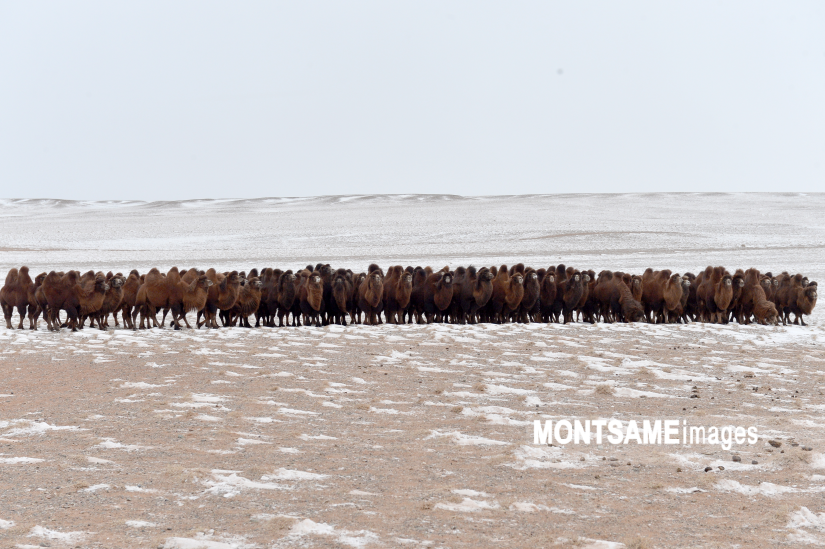
Jargalsaikhan had had a ‘Khanyn Khetsiin Khuren’ strain of camels from the time when he first began herding. The Khanyn Khetsiin Khuren camels mostly have brown long wool coat, and they look dark brown. A few years ago, he brought a male camel of the ‘Galbyn Gobyn Ulaan’ strain for breeding. Over 70 percent of Galbyn Gobyn Ulaan camels are reddish-brown and have a bigger physique.
It should also be noted that it is better not to go to a male camel on the Eve of the Tsagaan Sar Holiday as male camels are said to be quite violent on that particular day. Presently, Galbyn Gobyn Ulaan camels are being raised to make its wool a world-class brand of Mongolia. Our host family prepares 2.5 tons of wool from their 500 camels annually. They also get an average of over 200 kilograms from over 400 heads of goats every spring. Last year, the price of camel wool was MNT 6000 per kilogram, while unsorted cashmere was about MNT 70-80 thousand.
The Gobi people dry camel meat to use it as borts (air-dried meat) alongside using it as an ingredient in their meals. The body mass of a male camel can range from 700 to 800 kilograms, and its meat weighs around 500 kilograms, while the meat of female camels weigh about 300 to 400 kilograms. A kilogram of camel meat is sold at about MNT 4000, thereby ‘At,’ a full-grown male camel, is sold at around MNT 1.6 million, with the heavier, larger camels reaching MNT 2 million. From this, we can see that Jargalsaikhan’s family earns quite a bit of money from sales of raw materials, meat, and milk, which he uses in a way to easily handle the household needs.
While chatting about the cost of raw materials, meat and milk on our way to check the grazing camels, Jargalsaikhan’s eldest brother O.Tegshbayar offered to make us a nutritious bowl of milk tea with rice, ribs and meat after returning home.
Not long after, peacefully grazing camels appeared in the midst of the Gobi dunes. With his cousin E.Erdenebayar, the main role of our reportage Jargalsaikhan rode around the grazing camels and changed their rides by each catching full-grown male camels with a lasso. In order to not let the camels forget their training, they intentionally choose some camels that have not been ridden recently to gather the camels. And that was how the tall brown camel trotted to the far side of the grazing camels as camel herder O.Jargalsaikhan rode the camel with his Loovuuz (fur hat) and Corsac fox coat.
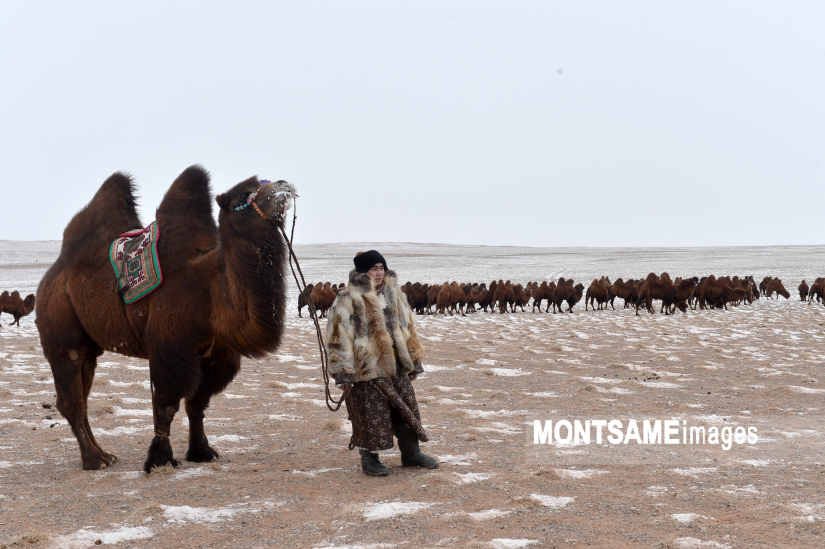
Counting their heads as he observed the camels on the pasture, he said, “My father raised me to be fond of animals from very young. Similar to the idiom, ‘to have someone’s number,’ I am likely to be most aware of camels amongst the five types of livestock. As the animal breeds well in the lowlands, the camel is the most beneficial animal for us as the Gobi people. The tall neck enables the camels to see in the far distance day and night, and they are able to find water from up to 30 kilometers away.”
As we returned from the pasture, the sun had already sunk below the hills. Despite the longer daytime in the Gobi Desert even during winter, time passed quickly amid the busy life of herders. As we also returned to our ger, the camel flock remained in the far distance, quietly grazing in the frost of the valley.
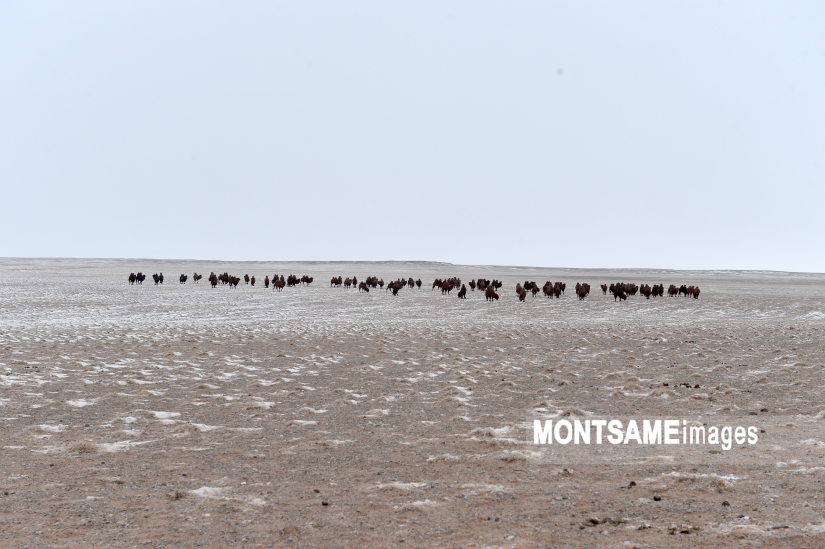
V.
When we returned back to the outside of the ger, sheep and goats were already fenced in the herder’s campsite, while the camels had yet to arrive. A melodic sound of young camels bellowing is heard from the inside of the fences once in a while. Telling us that the female camels often return to their dwelling after the sky grows dark, Jargalsaikhan turns away from us to look at the sheep and said, “Half of them are not here, the other half must have remained down the road,” as he went on his way. During this time, his eldest brother Tegshbayar was roasting rice with spoons of butter, adding milk tea that was prepared beforehand. Soon he added small pieces of sheep ribs and breast bones. After only a few minutes, that was how we saw the delicious rice tea enjoyed by the Gobi people becoming ready to be served.
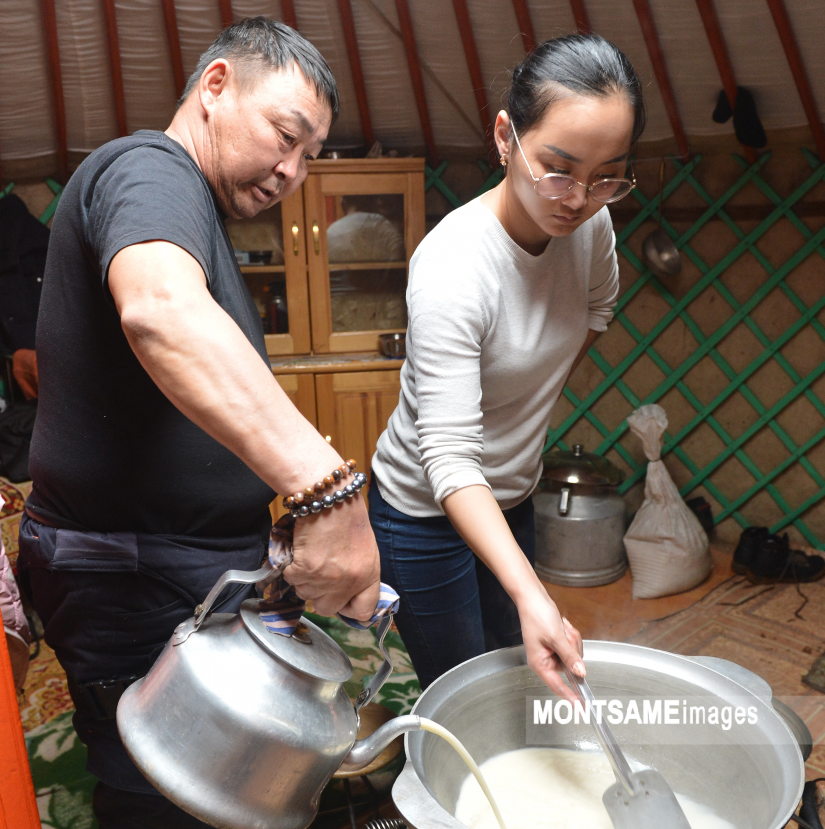
Before offering us the tea, he put some milk into the fermented camel's milk to make it less dense and boiled it with butter, making ‘Camel milk boil’.
The host Jargalsaikhan entered the ger after it had already become dark outside. He collected together all the sheep and goats left behind in the grazing area to their flocks. He said they were by the well not far away.
While the family host was taking off his deel and accommodating himself in a comfortable position to enjoy his tea, we continued our unfinished talks about the twin baby camels we saw during the camel milking.
“We hear about the birth of twin baby camels every now and then. Sometimes I also see news on the TV. But in my many years of herding camels, I have never seen twin baby camels myself, so I do not know about this well. However, last year, we had a bald-headed baby camel that looked like a sheep here. He has now grown into a young camel, grazing with the other camels,” showing us a photo of the camel from his phone. It really did look similar to a breed of bald-headed sheep. He never also questioned why it was born this way. “It is probably the natural order of things,” he said big-heartedly.
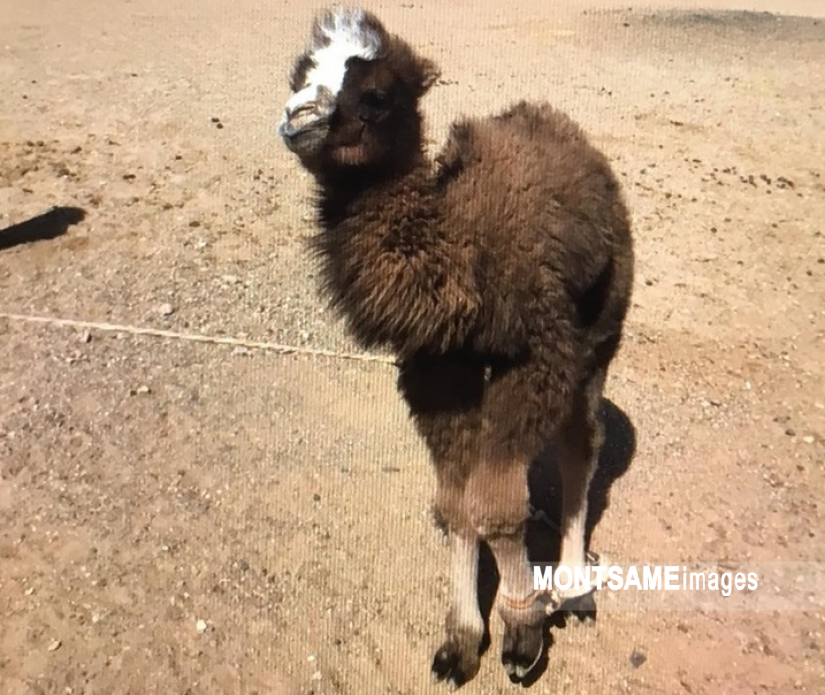
O.Jargalsaikhan was born in the vast land of the Gobi Desert, where children run through the sand dunes barefoot, and the locals’ hearts melt with the bellowing sounds of baby camels. That is how we spent a day with this quiet, but fairly straightforward man when needed to express his views. This camel herder who always says, “It is warm,” despite the winter cold breeze tracked over by the blizzard, and shows no hesitation in waking up at the break of dawn to stoke the fire and boil some tea if guests and travelers turn up to his home, continues to live his winter days in the same rhythm. However, it is here that a life of tranquility exists. After finishing our reportage, we thanked O.Jargalsaikhan and posed for a group photo, embarking on our road back to Ulaanbaatar city.
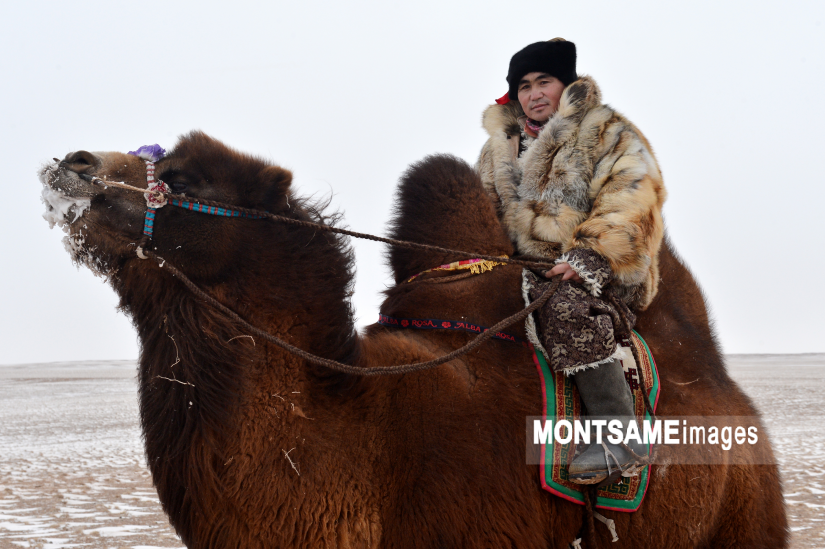
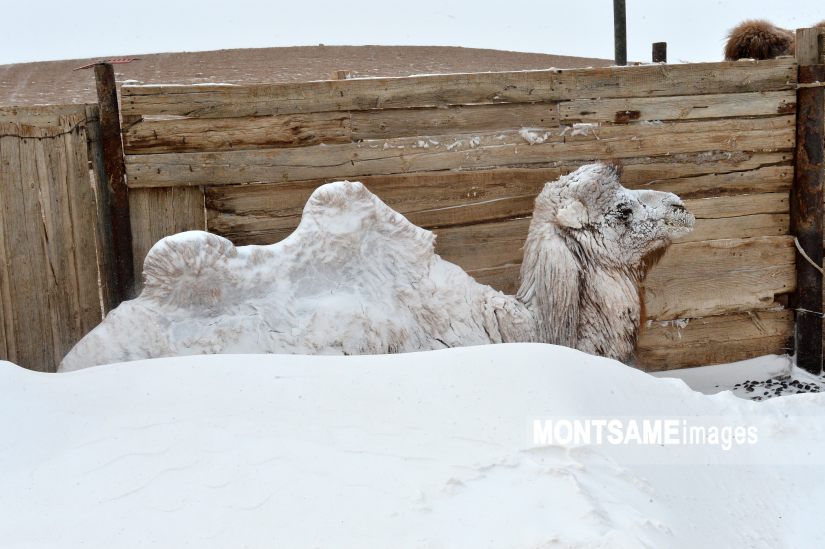
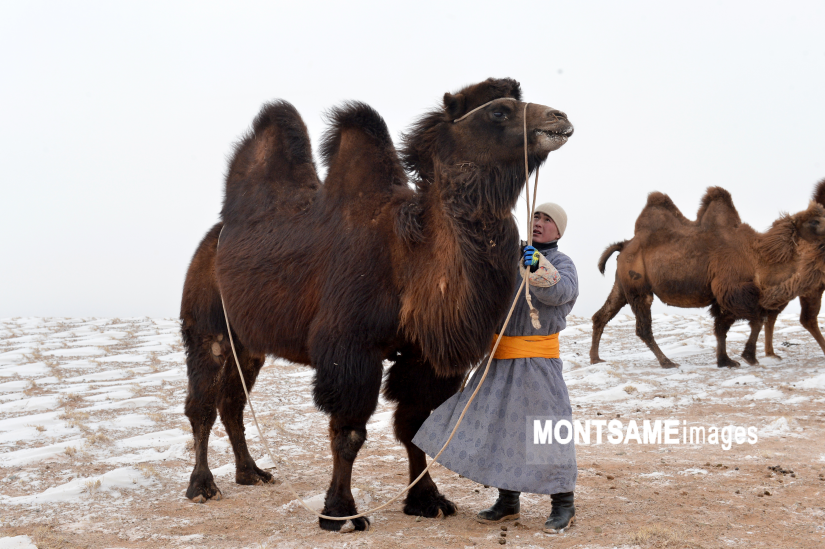
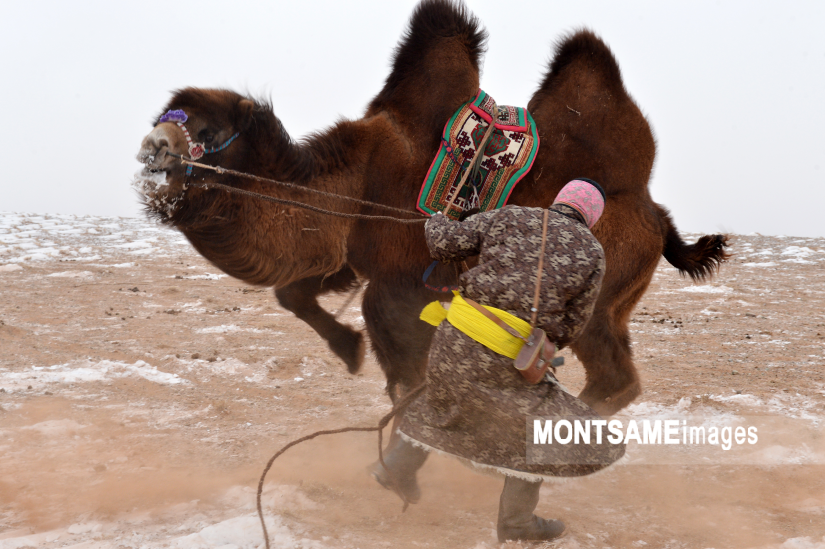
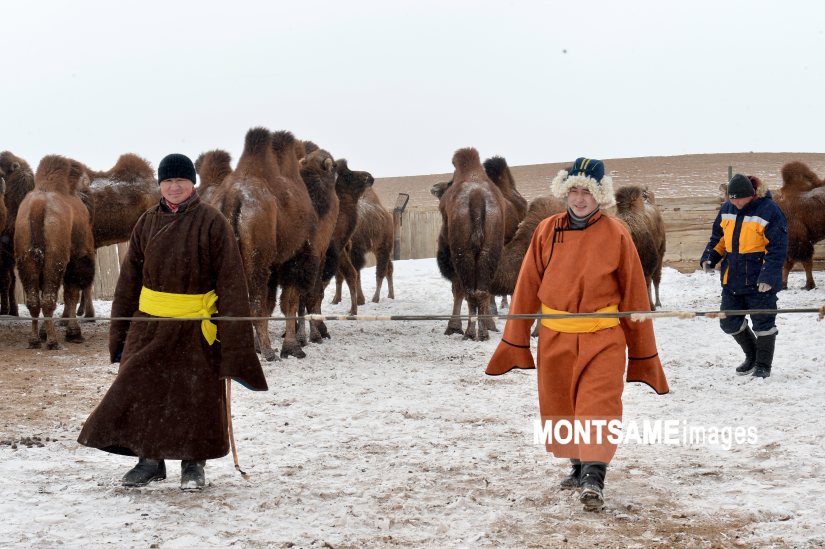
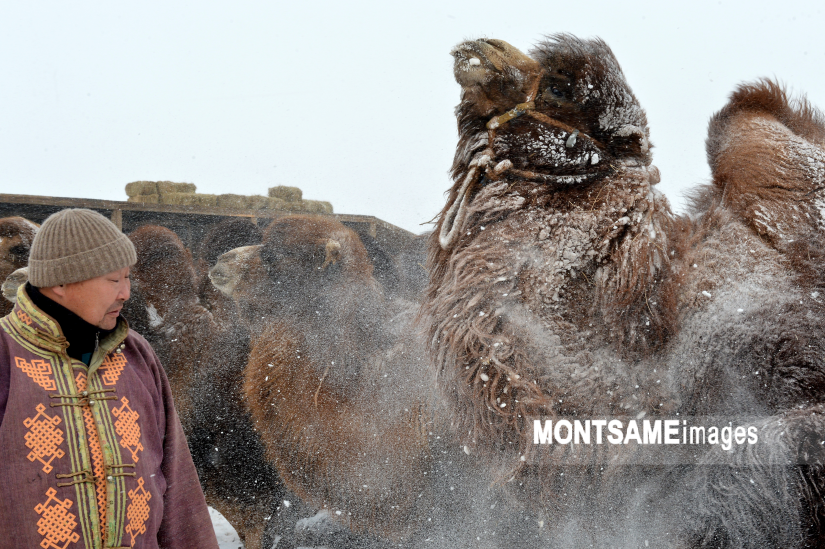
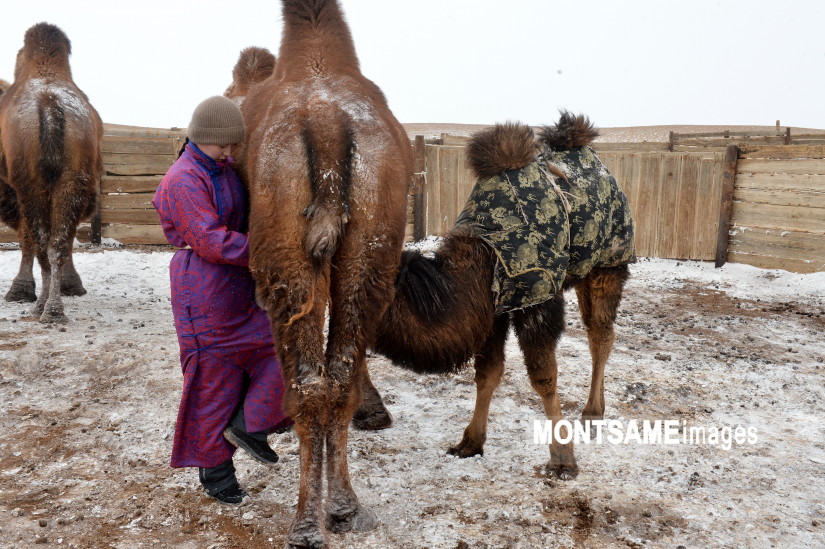
B.Altankhuyag
Sh.Batbold
Photography by N.Batbayar
 Ulaanbaatar
Ulaanbaatar






